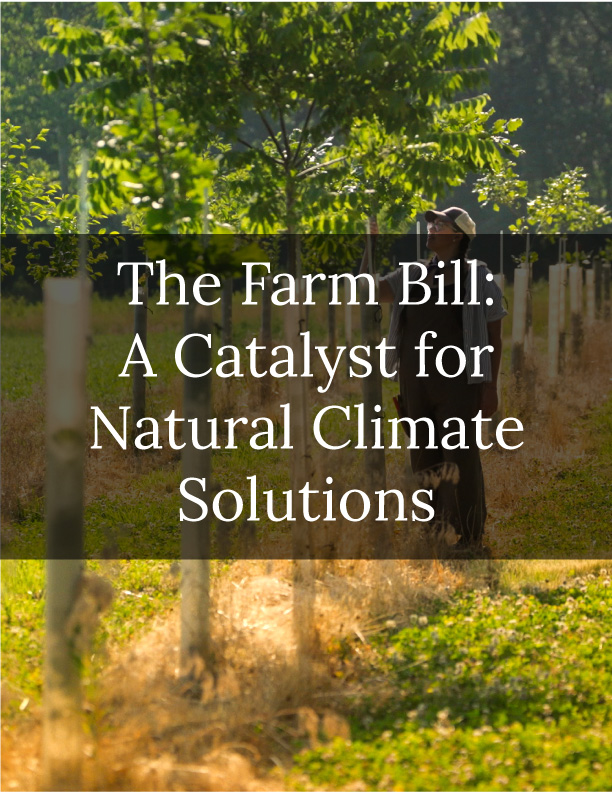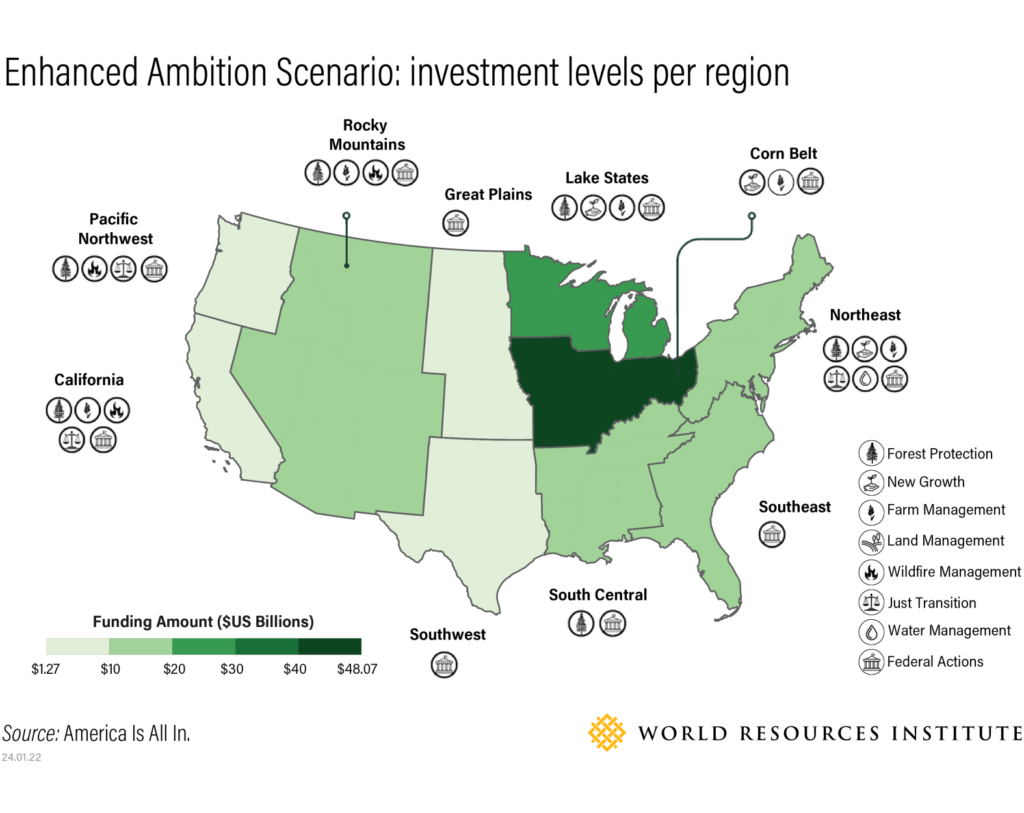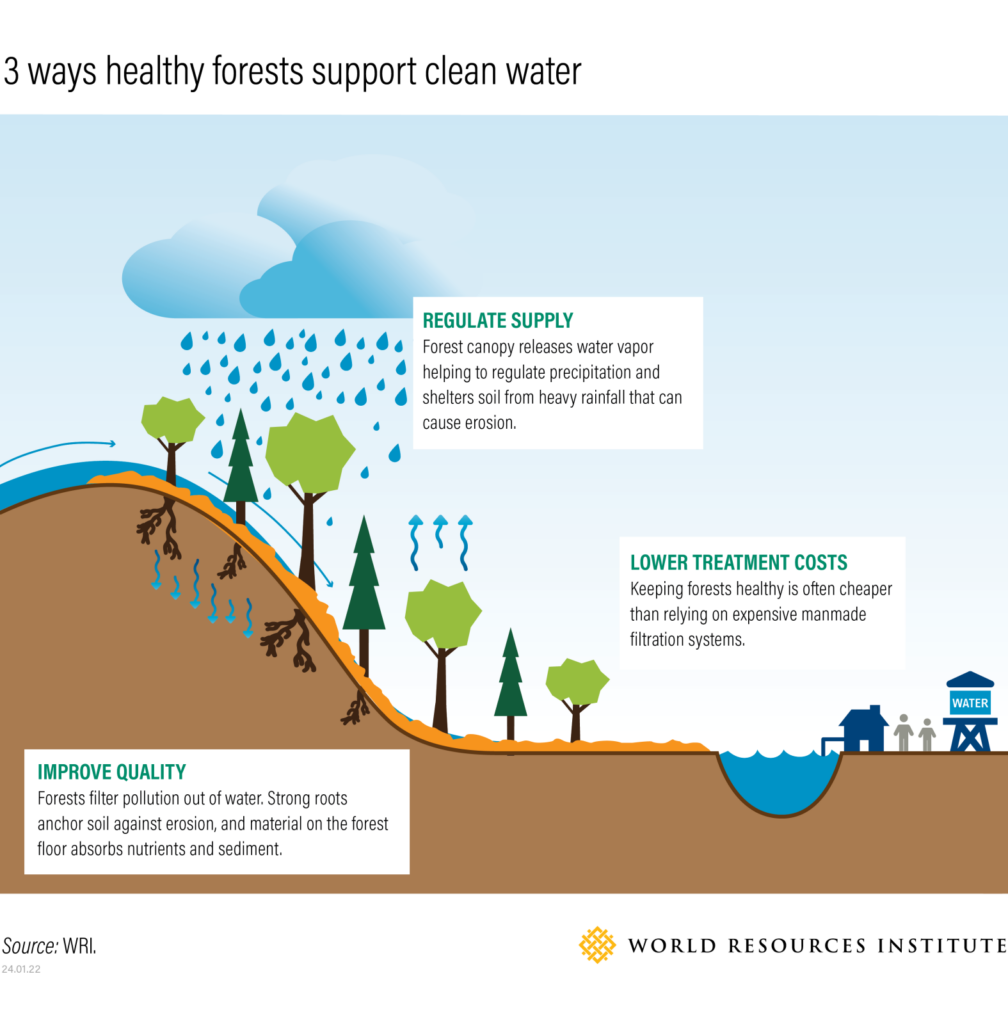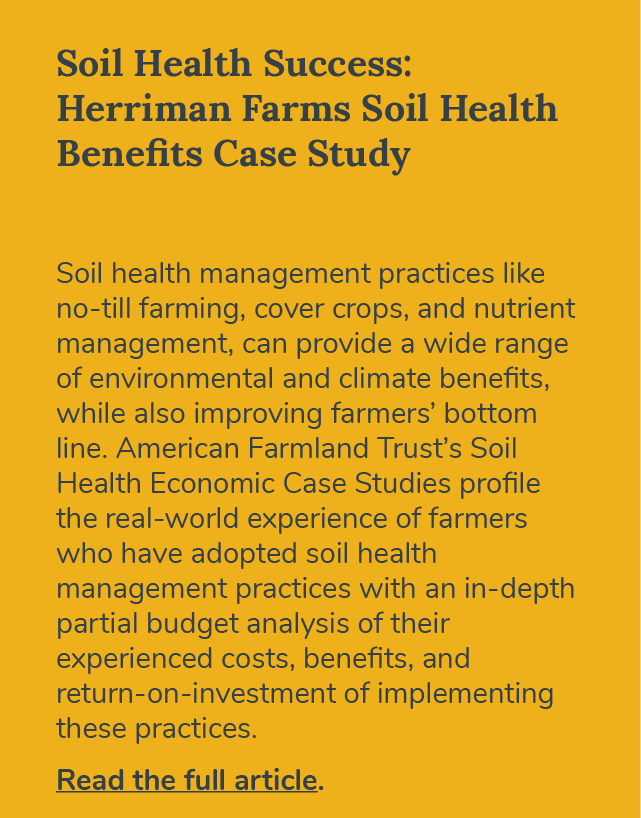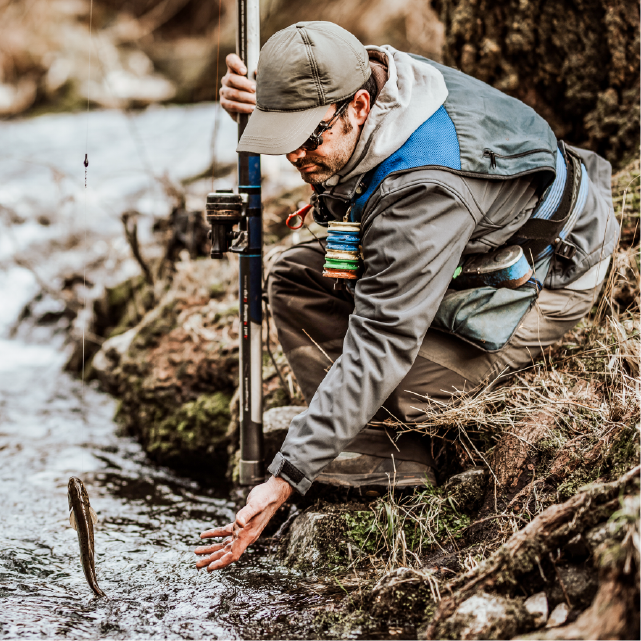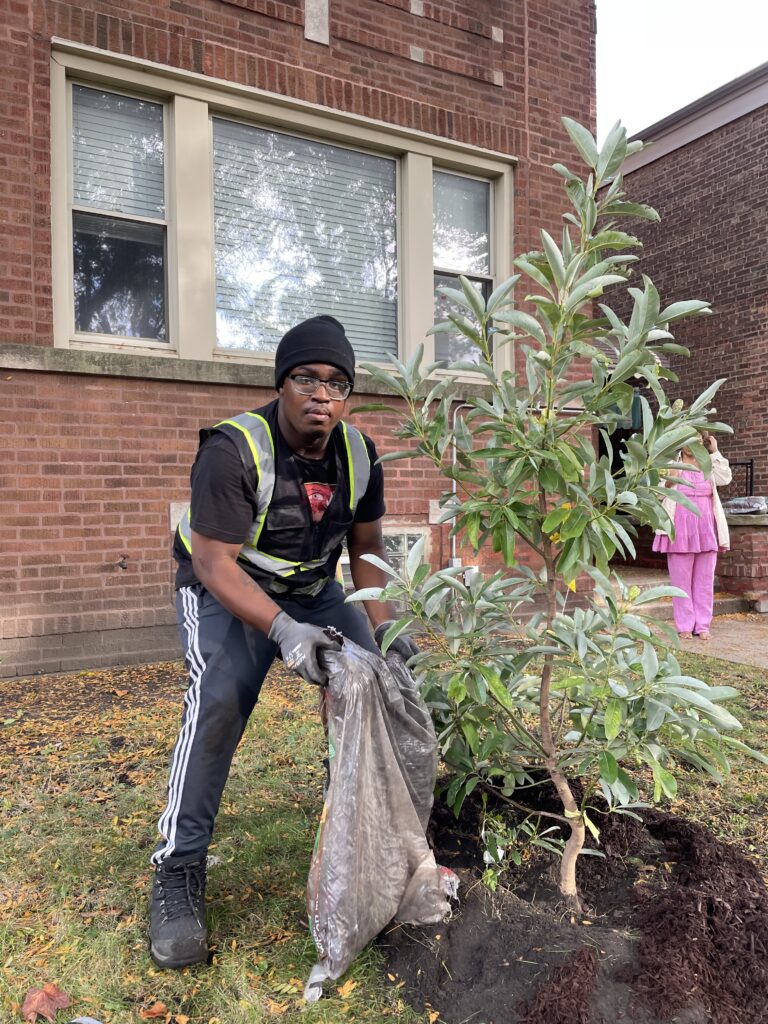In 2022, U.S. Nature4Climate profiled the Boise City of Trees Challenge, a community-led effort to increase urban tree canopy in Boise by planting one tree for every household [100,000] in the city. What makes this effort unique is that the urban forestry effort is coupled with an effort to restore the Boise National Forest, nearly 200,000 acres of which was burned by the Pioneer Fire in 2016. Post-fire reforestation provides many benefits for communities and the environment. In addition to jump-starting carbon sequestration, restored forests provide wildlife habitat, reduce the risk of landslides, improve water quality for surrounding communities, and provide areas for nearby communities to enjoy nature. With proper planning and management, restored forests improved resilience to wildfire, pests, and other climate change-driven threats.

For this reason, the urban forestry goal was complemented by a plan to plant one tree for every person in Boise [235,000] in the Boise National Forest. Former Boise City Council member Elaine Clegg, who has helped lead the City of Trees Challenge, noted that having clearly defined goals was key: “People grasped it because they understood it. More importantly, everybody here said, ‘I think we can lean in and help’ and make it work.
On May 15, the program’s partners gathered at the USDA Forest Service’s Lucky Peak Nursery and in the Boise National Forest itself to celebrate the successful planting of 235,000 seedlings to help support the restoration of the forest. The City of Trees Challenge serves as an example of how federal agencies, municipal governments, and non-profit organizations can work together to accomplish ambitious tree planting goals.
Laying the Groundwork: The Vital Role of Tree Nurseries

The Lucky Peak Nursery is one of 8 facilities (6 nurseries and 2 seed extractories) in the U.S. Forest Service network. It currently has the greenhouse capacity to produce 1.7 million seedlings per year, and bare root field orders average 1-1.5 million seedlings per year, averaging combined annual orders of 3 million. The nursery plays a key role in successfully reforesting areas impacted by wildfire. Seeds are first collected by volunteers and contractors, who carefully select the healthiest, most vigorous trees – paying attention to genetic diversity. The seeds are then sent to the nursery, where they are extracted, sorted, grown, packaged, and shipped to private clients and to help restore federal public lands. The nursery does more than just grow seedlings. Nursery staff carefully tracks where each tree seed was collected from, including its location and elevation – ensuring that when the seedlings are ultimately planted, they have the best chance for survival.
As noted in the 2021 paper, Challenges in the Reforestation Pipeline in the United States, nursery capacity in the U.S. currently falls well short of what is needed to support ambitious reforestation efforts. Reforesting 64 million acres of land by 2040 with 30 billion trees would require 1.7 billion more seedlings to be produced every year – a 2.3-fold increase over nursery capacity in 2021, with additional investments also made in seed collection and seedling production. Re-building the Forest Service workforce is also necessary to accomplish these goals. According to a Forest Service fact sheet, the non-fire portion of the Forest Service workforce has declined by 40% even as wildfire increases substantially.
The REPLANT Act, passed as part of the 2021 Bipartisan Infrastructure Law, increased annual federal funding for reforestation from $30 million to $140 million, and mandates removing the 3 to 5 million acre backlog of areas requiring post-fire restoration. This will allow federally owned nurseries to increase capacity and strengthen the reforestation workforce. The Lucky Peak Nursery, which produces a combined 3 million bare root and container plug seedlings a year, is already half a million trees over capacity. According to Forest Service staff interviewed at the City of Trees event, funding from the REPLANT Act will allow the nursery to increase capacity to 7 to 10 million trees in the next 10 years. The City of Trees Challenge serves as an example of the kind of collaborative effort that can be supported with REPLANT Act funding.
Planting the Trees

Once the Lucky Peak Nursery produces the seedlings, the next step is to get them into the ground. The Forest Service undertakes extensive planning to ensure the trees survival, making sure the right trees are planted in the right place at the right time. At the Lucky Peak Nursery, seeds are carefully tracked according to the location and elevation where they are harvested. Nursery staff makes sure to select species and genotypes that are likely to thrive in the Boise National Forest. Silviculture staff ensures that trees are planted in areas that are unlikely to regenerate naturally. Those planting the trees, including volunteers and contractors, are trained to ensure that trees are planted in spots where they are most likely to persevere. According to John Riling, who manages the Forest Service’s wildfire strategy for the region, with careful planning, up to 80% of seedlings planted can survive. “Being strategic about how we plant, thinking about planting density and locations for establishing seed sources so those trees can further spread seeds is all critical in planning, design, and implementation.”
This program’s success can be attributed in large part to the strong partnerships formed between federal and local government agencies and non-profit organizations. Under its silviculture program, the USDA Forest Service lends expertise, nursery capacity, and supports the workforce necessary to get the trees into the ground. The Nature Conservancy, Treasure Valley Canopy Network, Arbor Day Foundation helped provide the funding and support necessary to reach the program’s ambitious goals.
The Forest Service’s John Riling perhaps summed it up best when he said, “It’s an exciting era where tree planting has become sexy again. We’re starting to get funding through the REPLANT Act, a permanent authorized extension of the Reforestation Trust Fund, and also partners recognizing that value and supporting the effort are really allowing us to scale up.”
Don’t Forget the Urban Trees
The effort to replant the Boise National Forest is only one part of the City of Trees Challenge. The partnership is also continuing work to enhance Boise’s tree cover, with several additional communities in the Treasure Valley also participating in the program. Planting urban trees can bring significant benefits to the neighborhoods where they are planted. According to Elaine Clegg, “Right now the climate in some neighborhoods can be 10 degrees hotter than the climate in other neighborhoods on a hot day, solely dependent on their tree canopy cover.”
Enhancing Boise’s urban tree canopy focuses on reducing temperature disparities in different neighborhoods, particularly benefiting disadvantaged communities. Photos by Treasure Valley Canopy Network.
To date, nearly 17,000 trees have been planted in the city and surrounding communities. Partnerships with the Arbor Day Foundation, American Forests, Jayker Nurseries, ExtraMile Arena, and The Nature Conservancy help ensure trees are planted in areas lacking tree canopy – often in disadvantaged communities. The Boise Tree Captains program provides the workforce needed to get the trees in the ground in the neighborhoods where they are needed most. After the trees are planted, Tree Captains – volunteer leaders who work with neighborhood residents to plant trees – play an important role in maintaining the trees. According to Elaine Clegg, “We still have a lot of trees to go in the city, but I’m confident because of our success so far that we’re going to get there.”
Federal programs like the Forest Services’ Urban and Community Forestry Program, funded by the Inflation Reduction Act, can help support urban reforestation. Indeed, in 2023, the Treasure Valley Canopy Network was awarded a $1,076,500 million grant to support equitable access to tree canopy and urban tree maintenance programs. Tools like American Forests’ Tree Equity Score can help ensure that these trees are placed in the neighborhoods that need them most.
An Example for Future Efforts
Throughout the country – especially in Western states – urban areas are located in close proximity to National Forests that have been impacted by wildfire. Because these forests provide recreational services and a wide range of environmental benefits to those cities, they have a vested interest in restoring healthy forests. Accessing available sources of federal funding and establishing partnerships along the lines of the Boise City of Trees Challenge provides a way to bring together the funding, expertise, and workforce necessary to replant these forests. Coupling these efforts with community-led programs to restore urban tree canopy can help ensure the benefits of trees are shared equitably. Whether in a city or in a rural forest, every tree planted also helps pull carbon dioxide out of the air – helping to mitigate climate change and reduce threats to cities and forests alike. In the Boise National Forest, 235,000 new seedlings have joined the fight.
Related Reading:

Learn more about the City of Trees Challenge and how you can implement this in your community.

Use this infographic to make the case for the need for resources for urban tree maintenance, not just tree planting.
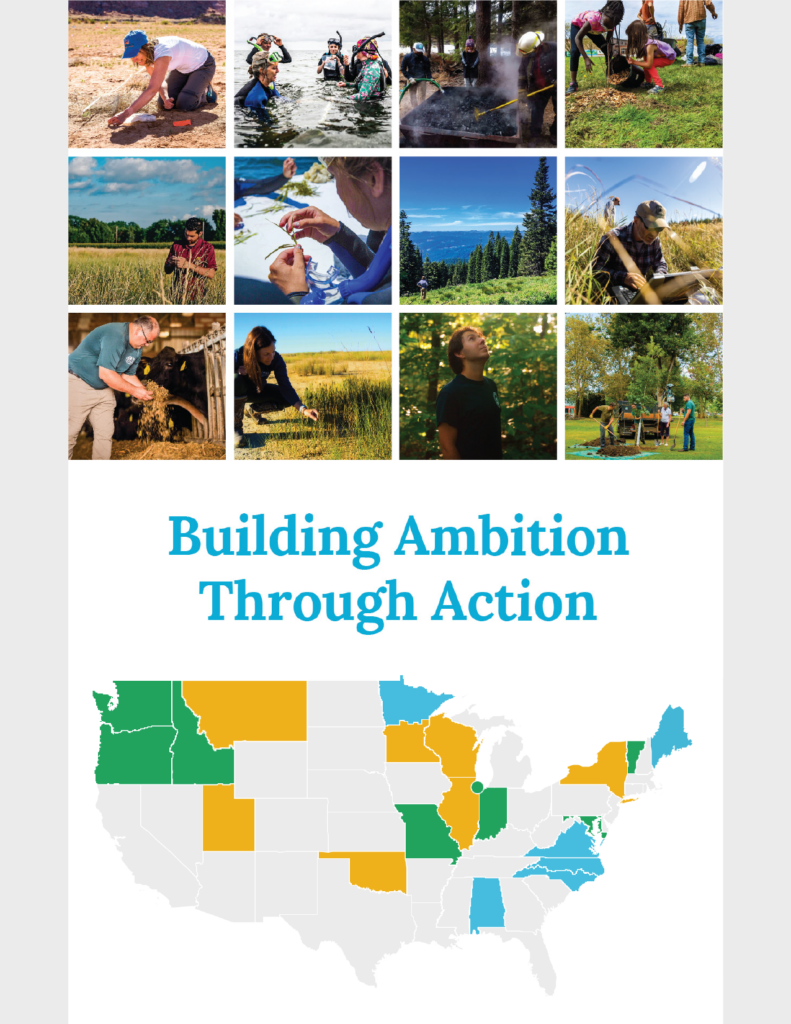
See more examples of how Natural Climate Solutions are benefitting communities across the United States.










